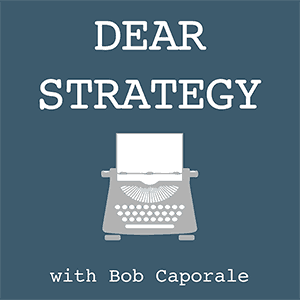Dear Strategy:
“How do we effectively present strategic alternatives to leadership to agree on one product strategy, and then make that strategic intent flow through to market execution?”
The idea of presenting “strategic choices” has certainly been gaining popularity in corporate circles. To be honest, I’m not sure where this term originated, but I seem to be hearing it more and more these days.
The idea, of course, is to utilize your strategic plan to help you choose between a number of different options that may or may not get you to your end goal. In this way, your strategy will help you choose what to do and, perhaps just as importantly, what not to do under given predicted conditions. Now, that covers the use of alternatives when developing your plan, but there is some debate as to whether or not these alternatives should be presented as an integral part of your plan. And that’s where I think this question begins.
In my opinion, I happen to like when different strategic alternatives are presented as part of an overall plan; mostly because it helps me to understand the logic and thought process of the presenter. I also think that understanding the alternatives helps to establish the things that you do not want to do as part of your strategy, which, as Michael Porter stated much more eloquently than I ever could, is just as important as knowing what you want to do as part of your strategy.
But there is a disclaimer, and I’ll give it from an executive’s point of view.
I like seeing strategic alternatives, provided that the presenting strategist also tells me what path they actually intend to pursue. If the purpose of presenting alternatives is to have me, as an executive, decide your path for you, then please go back and try again.
Part of what I want to come away with when someone presents his or her plan to me, is a level of confidence that the plan is in good hands. If I have to decide on the plan, then what do I need product managers or product strategists or business leaders for? And, worse, if I’m forced to decide on the path forward, then you’re setting the stage for me to make every other decision that needs to be made with respect to your strategy – mostly because you’ve put all the accountability for those decisions squarely in my lap. And then I become a micro-manager. And then people complain about me. And then they disengage.
Bad cycle.
Regarding the second part of the question about market execution, if you make your executives decide, then you are also making them accountable for execution. And a handful of executives simply can’t take on that level of work.
With all of this said, the best thing to do is present the alternatives, choose the path, and then take full accountability for the results. Then everything is much more likely to work according to your plan rather than according to someone else’s.
Listen to the podcast episode
Dear Strategy: Episode 018

###
Bob Caporale is the author of Creative Strategy Generation and the host of the Dear Strategy podcast. You can learn more about his work by visiting bobcaporale.com.





